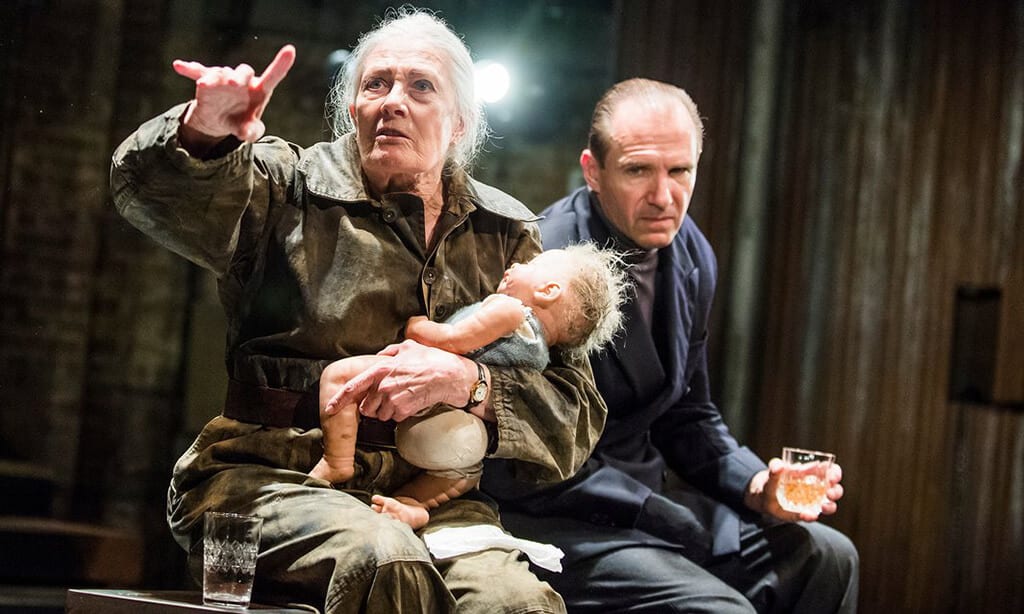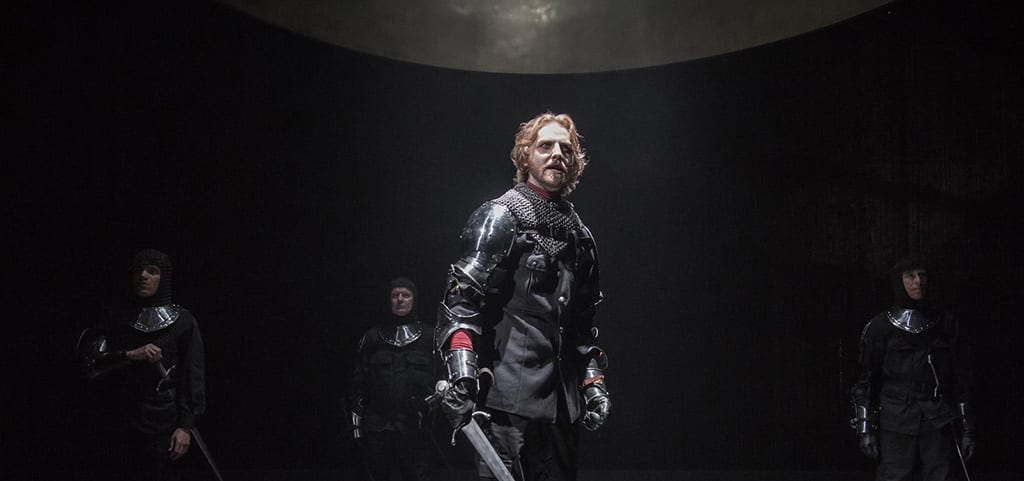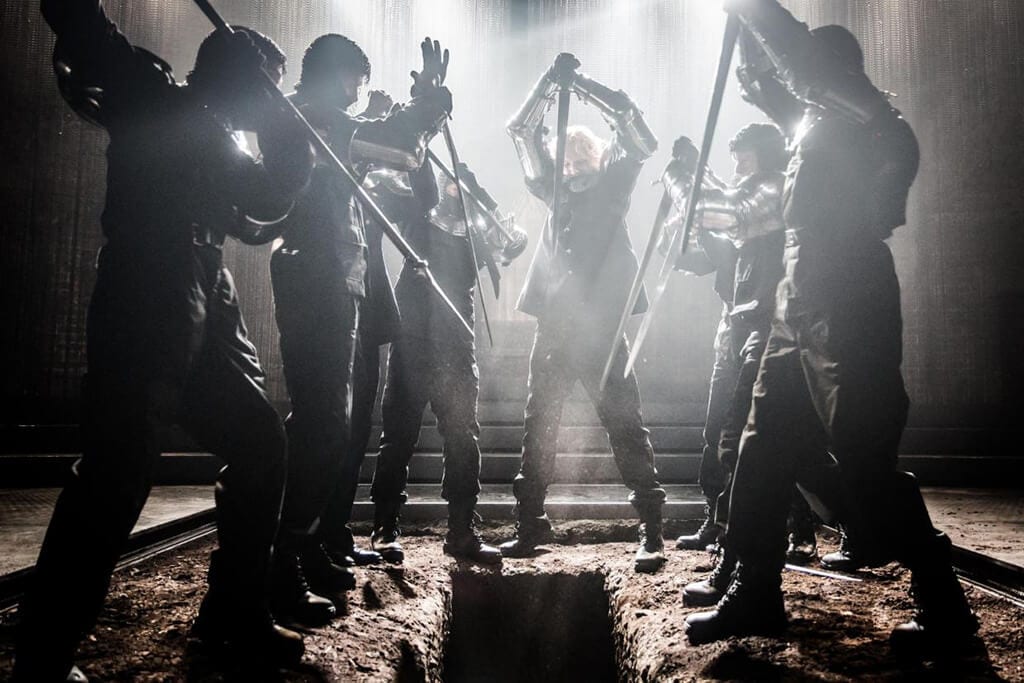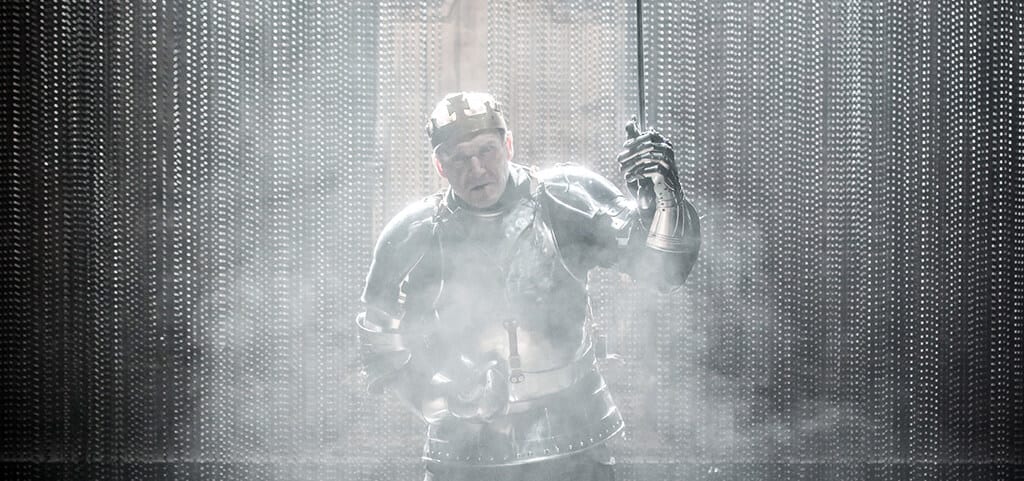A skeleton was found under a Leicester car park in 2012: the skeleton was later identified as the remains of Richard III, the last Yorkist king, who died in battle in 1485. This monumental discovery of Richard’s final resting place, which received a large amount of media attention, sparked renewed interest in the life and death of Shakespeare’s most notorious villain.
Rupert Goold uses the 2012 archaeological dig to shape his production. Before anything is spoken the audience is presented with a forensic team, cataloguing Richard’s bones at the dig site, notably his deformed spine, which renders Richard physically grotesque; there are also public spectators to the scene, watching in patient awe of the excavation. With this display finished, we are catapulted from present day back to the murky political arena of Richard’s England: the Wars of the Roses are the perfect tumultuous setting for Richard (Ralph Fiennes) to pluck the crown for himself. His deformity, which the costume department (Jon Morrell) has done well to recreate on Fiennes, informs his portrayal: being hideous and ostracised has set Richard on an unrelenting quest for power; a kind of revenge.
Goold has established a historical connection between the present day and Shakespeare’s representation. For a king so ruthlessly bent on power, his unceremonious burial is something of an appropriate humiliation. In the play we see how Richard’s depravity has no limits, particularly in his treatment of women: he molests Lady Anne (Joanna Vanderham), rapes Queen Elizabeth (Aislin McGuckin) in a paroxysm of lust, and shows absolutely no concern for the lamentations of his mother, the Duchess of York, and Queen Margaret. They rebuke him with venomous curses; delivered with so much fury that the audience is shaken to the core.
The attention to detail in Fiennes’ portrayal is what is most impressive; his subtle mannerisms that betray his desire to kill and slaughter his way to the top. We see him display false melancholy for Clarence’s imprisonment, humble himself before the irate Lady Anne, and play with the princes in false levity, all the while twitching with rage. Fiennes is brilliant: even at his most beguiling he is terrifying, everything he does is filtered through duplicity: the audience is privy to all his tricks; his mind is constantly calculating how to dispatch his enemies, but never completely emotionless: there is a semblance of a psyche; a tortured self behind all the masks.
As the end nears and his control unravels, he is more obviously disturbed: confounded and aggravated; like a wounded predator he is now at his most dangerous and wild. A parade of spirits torments him the night before the battle, weighing on his conscious: a slow procession of the many he has wronged, come to curse him and bring fortune to his enemy: Henry Tudor (Tom Canton). Richard is eventually defeated in a choreographed fight scene, accompanied with blinding stage lights. He falls in a storm of emotions: anger, sadness and fear; doomed to a fate he wished so much to avoid: the sad grave of a freak.






